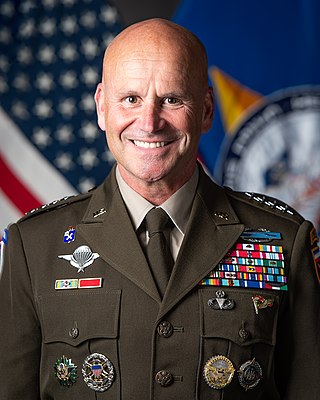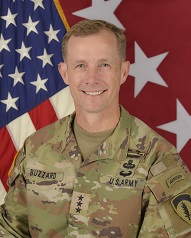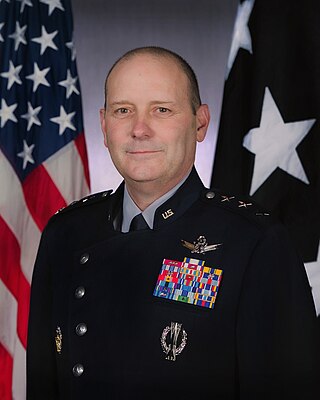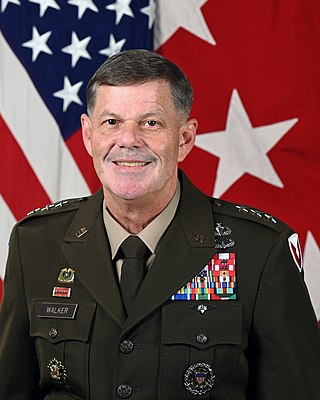
The Field Artillery Branch is the field artillery branch of the United States Army. This branch, alongside the Infantry and Cavalry branches, was formerly considered to be one of the "classic" combat arms branches, but is today included within the "Maneuver, Fires and Effects" (MFE) classification, in accordance with current U.S. Army organizational doctrine.

The reorganization plan of the United States Army was implemented from 2006 to 2016 under the direction of the Brigade Modernization Command. This effort formally began in 2006 when General Peter Schoomaker was given the support to move the Army from its Cold War divisional orientation to a full-spectrum capability with fully manned, equipped and trained brigades; this effort was completed by the end of 2016. It has been the most comprehensive reorganization since World War II and included modular combat brigades, support brigades, and command headquarters, as well as rebalancing the active and reserve components.

Each state in the United States has a senior military officer, as the state adjutant general, who is the de facto commander of a state's military forces, including the National Guard residing within the state, the state's naval militia, and any state defense forces. This officer is known as TAG, and is subordinated to the chief executive. They do not have authority over police forces, only military forces.

Joseph Matthew Martin is a retired general in the United States Army who served as the 37th Vice Chief of Staff of the Army from 2019 to 2022. He previously served as the director of the Army Staff in Washington, D.C.

The United States Army Futures Command (AFC) is a United States Army command that runs modernization projects. It is headquartered in Austin, Texas.

Christopher Gerard Cavoli is a four star general in the United States Army who serves as the commander of United States European Command since 1 July 2022 and Supreme Allied Commander Europe since 4 July 2022. He previously served as the commanding general of United States Army Europe and Africa from October 2020 to June 2022, and before that as the commanding general of United States Army Europe from January 2018 to September 2020.

John Michael “Mike” Murray is an active United States Army general, the first commanding general of United States Army Futures Command, a new four-star Army Command headquartered in Austin, Texas. Murray was previously the G-8, a deputy chief of staff to the Chief of Staff of the United States Army. As G-8, Murray served as the principal advisor to the Chief of Staff for materiel requirements, as military counterpart to the Assistant Secretary of the Army for acquisition, logistics, and technology.

The United States Army Acquisition Corps (AAC) is the officer / NCO corps of the United States Army Acquisition Workforce (AAW), a branch which includes civilians, officers, and NCOs. The Acquisition Corps is composed of army officers who serve in acquisition, a specialized form of product development, fielding, and support and Noncommissioned Officers who specialize in Contracting, Level I Program Management and Purchasing. These officers begin their careers in the other branches of the army for eight years, after which they may elect the Acquisition branch as their career as assistant program managers (APMs), program managers (PMs), and program executive officers (PEOs). The Noncommissioned Officers (NCOs) are reclassified in the Army Acquisition NCO Corps after serving 7-10 years in their respective enlisted career management fields, and serve primarily in the Army Acquisition Career Management Field - 51 and (MOS) 51C. 4% percentage of the Army Acquisition Officers serve among the 40,000 members of the army acquisition workforce, 6% in MOS 51C - Acquisition, Logistics and Technology Contracting Noncommissioned Officer, and the remainder 90% percentage consist largely of Department of the Army civilians.

Dennis Scott McKean is a retired United States Army lieutenant general who last served as deputy commanding general for Army Futures Command and the Director, Futures and Concepts Center. He previously served as the chief of staff for United States Central Command.

Curtis Alan Buzzard is a United States Army lieutenant general who has served as the commander of Security Assistance Group - Ukraine since August 2024. He most recently served as the commanding general of the United States Army Maneuver Center of Excellence and Fort Moore from July 2022 to July 2024. Prior to that, he served as the deputy chief of staff for operations, plans and training of the United States Army Forces Command from January 2022 to June 2022, and as the 78th Commandant of Cadets of the United States Military Academy from June 2019 to May 2021.

Douglas Andrew Schiess is a United States Space Force lieutenant general who serves as the commander of United States Space Forces – Space and combined joint force space component commander of the United States Space Command. He previously served as the commander of Combined Force Space Component Command and vice commander of Space Operations Command.

Flem Bowen Walker Jr. is a retired United States Army lieutenant general who last served as the Deputy Commanding General and Chief of Staff of the United States Army Materiel Command from 2020 to 2022. Previously, he served as the Deputy Chief of Staff for Logistics and Operations of the United States Army Materiel Command.

Steven Scott Nordhaus is a United States Air Force general who has served as the 30th chief of the National Guard Bureau since October 2, 2024. He previously served as the commander of First Air Force from 2023 to 2024. He served as the Director of Operations of the National Guard Bureau from 2019 to 2022. From 2017 to 2019, he was the Commander of the Air National Guard Readiness Center.

Richard "Ross" Coffman is a retired United States Army lieutenant general who last served as the deputy commanding general for combat development of United States Army Futures Command from 2022 to 2024. He previously served as director of the Next Generation Combat Vehicle Cross Functional Team from August 2018 to August 2022. Coffman attended Harvard University, Embry Riddle University, and Centre College.

In the US Army, Patrick Matlock is the Deputy Chief of Staff for Operations, Plans, and Training (G-3/5/7) serving on Army Staff for operations (G-3), plans (G-5), and training (G-7). Both G-8 and G-3/5/7 sit on the Army Requirements Oversight Council (AROC), chaired by the Chief of Staff of the Army (CSA).















